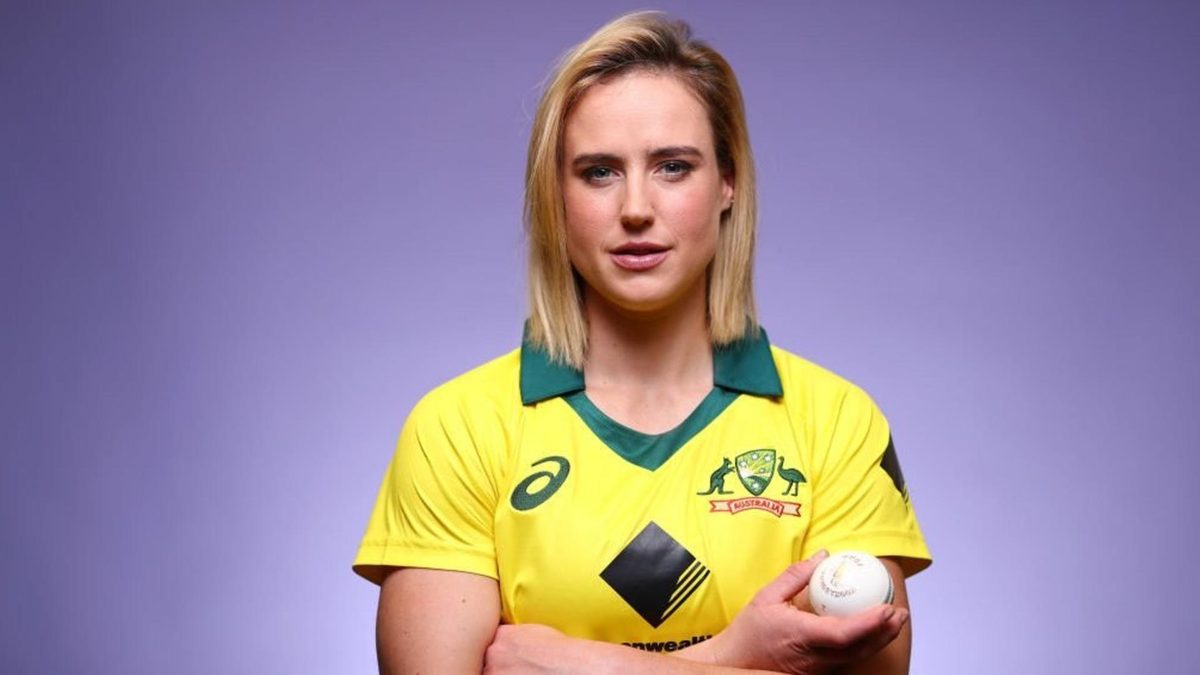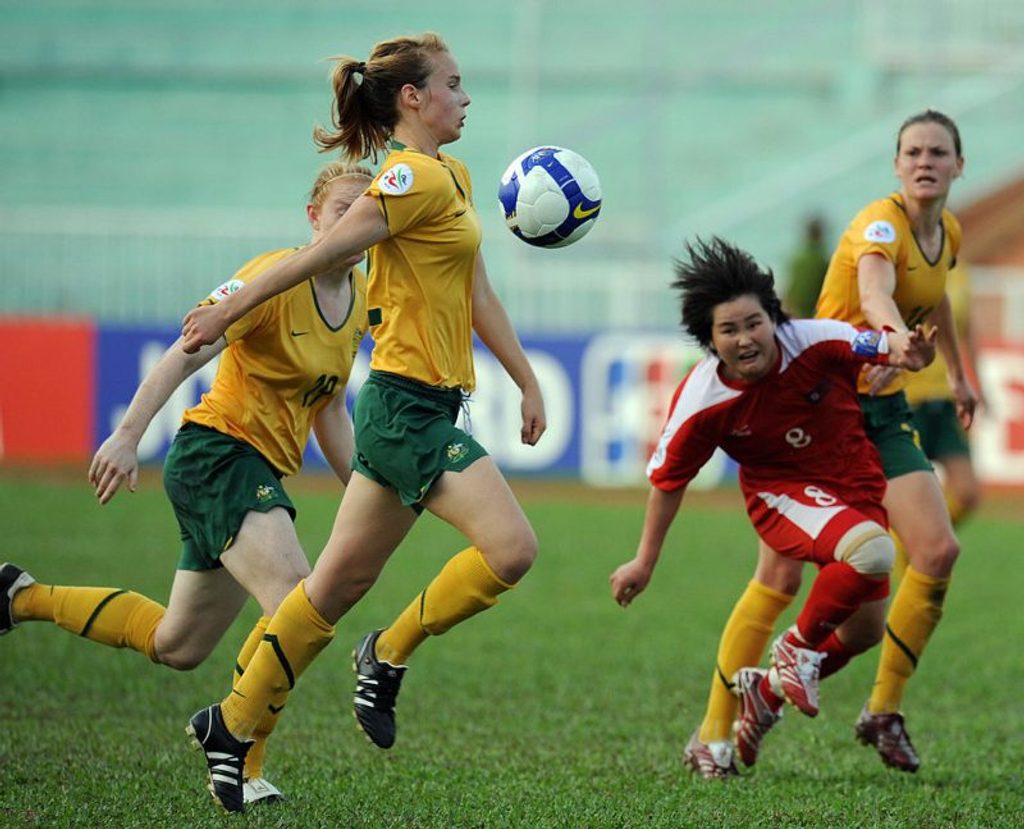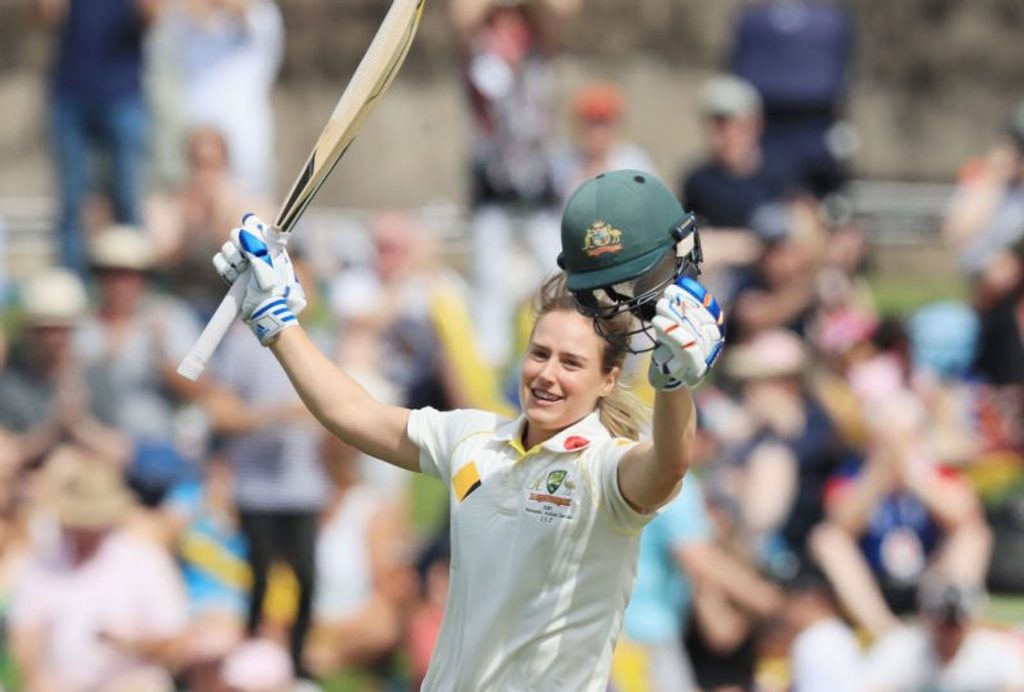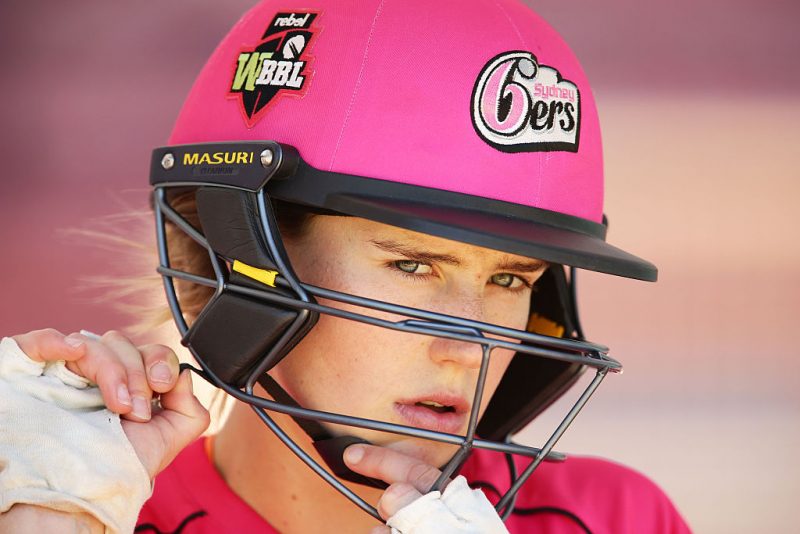
Ellyse Perry has been named one of Wisden’s Cricketers of the Decade. Isabelle Westbury charts the Australian’s rise from being a bowler who batted to becoming the most complete cricketer of her generation.
Wisden’s decade in review series is brought to you in association with Perry, designers of distinctive club blazers made in Yorkshire since 1946. Vote in the decade in review readers’ survey.
It is not so much that Ellyse Perry was not a superstar at the turn of the decade. It’s more that, back then, she was an altogether different kind of superstar.
In 2010, Perry was arguably the only globally recognised figure in women’s cricket, her status as a dual international (in football, too) having catapulted the teenager beyond the confines of any one sport. Yet few will have seen Perry’s feats on the field. They would simply have known of her.
Today, Perry remains a superstar, but judged on different criteria. As women’s cricket has developed from a sport that was little seen and token-referenced to one in which performances are watched, analysed and scrutinised more than ever before, so Perry has evolved to become the complete cricketer.
 Ellyse Perry juggled both international cricket and football at the start of her career
Ellyse Perry juggled both international cricket and football at the start of her career
Tall and athletic, Perry burst onto the scene as a 16-year old fast-bowling wunderkind. She now straddles the stage as the all-round protagonist, with a plot which rarely strays from revolving around her, having become one of the most consistently top-performing batters of the modern game. Perry had always possessed those key raw ingredients — the technique, skill, desire — but it was not until 2014 when both application and opportunity collided.
Application because she made the choice to focus solely on cricket over football. And opportunity because this coincided with the rare occasion of a crisis in Australia’s top order. In her 57 ODIs before 2014, Perry had batted in the top five just twice. The first was in a comfortable win over India six years prior, but the second had come just the previous summer. In the final ODI of an Ashes series in which England recorded five consecutive white-ball wins, Perry was given a punt at five and stroked an unbeaten 45 to salvage a respectable Australian total. That was enough.
When England travelled to Australian shores for the reciprocal Ashes series six months later, Perry’s reincarnation was in full flow. She scored more runs than anyone else in the series and then topped it off tied for most wickets too.
Across the decade, Perry is the eighth highest run-scorer the world over. In isolation, this is a commendable feat, but taken in context, it is remarkable. Fewer than 10 per cent of those runs were scored in the first four years. The rest came in the final six. Before 2014 Perry’s average was hovering in the low twenties; since then it has soared to 72.55, a figure that no one else is even close to.
***
It is difficult in the women’s game to get a real sense of achievement in Test cricket. Only England and Australia regularly play it, albeit still infrequently, which provides for a statistical anomaly for those accustomed to scrolling through numbers in the men’s game. While you would expect a player’s average to improve in a longer game, most women have a marked difference between their impressive white-ball statistics and those with the lesser-spotted red ball, almost entirely due to their unfamiliarity with the format.
Perry stands alone in being consistent throughout. Across the decade she has a Test batting average of 114.6 and a bowling one of under 17. And these are the figures of a woman whose Test career has been limited to just eight Tests across a career spanning 11 years. A travesty, really.
 Ellyse Perry has managed to achieve consistent success in Test cricket as well as in white-ball cricket
Ellyse Perry has managed to achieve consistent success in Test cricket as well as in white-ball cricket
That consistency, a word which many strive to achieve and which cricket, by its very nature, is designed to fell, is not only confined to crossing formats for Perry, but within them too.
In July 2015 she became only the third woman ever to score six consecutive ODI 50s. It was at a time when Chris Rogers was achieving similar feats in the men’s game, only in Test cricket, a format uniquely designed to reward longevity. However, for perhaps the first time, instead of a woman being compared to a man, Rogers found himself rarely mentioned without reference to a woman – Perry.
So broad an appeal does Perry’s name now hold that when, in 2019, her batting was dominating the women’s Ashes in a similar vein to Steve Smith in the men’s, any comparisons between the two were quickly met with the response that it was an unfair one: Smith’s bowling was feeble by comparison.
To add to our own sense of inadequacy, Perry not only tots up these staggering feats on a regular basis; she has a knack for turning up to the big events too. Since the first multi-format Ashes in 2013, she has both the most runs and wickets overall. Of the six Ashes series played this decade, Perry has been Player of the Series in three. She also took three-for-not-many in both the 2010 World T20 Final and the 2013 World Cup Final.
***
Such is Perry’s greatness that whenever something approaching a weakness appears, it is pounced upon. The art of captaincy, for a time, looked as though it might be beyond her. When she took the reins of the Sydney Sixers in the inaugural WBBL in 2014, they slumped to six consecutive defeats. Aha, we thought, she has been found out. One-third of the blonde brigade, alongside Meg Lanning and Alyssa Healy, Perry’s sterile public persona, hiding behind a veneer of professionalism before it became the norm, was exposing what we had always suspected: Here was no leader of women.
 Ellyse Perry had a tough start to life as Sydney Sixers captain
Ellyse Perry had a tough start to life as Sydney Sixers captain
Only we judged too soon. Perry got married, the Sixers won their next nine matches to reach the WBBL’s first final and Perry scored 732 ODI runs in 2016 (only eight other players have managed more in a calendar year, ever). A year later she became just the third women to score a Test double century, against England. Of course. Perry had adapted.
It is that ability to adapt, to learn from her (comparative) failures, which is the final touch to the Perry product. Her captaincy matured, as did her batting, and then her nature relaxed with those around her too. She is quick to attribute much of her success to two key coaches, Matthew Mott for Australia and Ben Sawyer for the Sixers, and they, in turn are quick to attribute much of theirs to her. Ego doesn’t come into it, because Perry listens, and learns.
The challenge now is to maintain that drive. Perry, after all, has done it all. What more is there to achieve, to motivate her? Maybe that is the perspective not of Perry, but of us onlookers, because her form is still improving. She ends the decade as the highest ranked all-rounder in both ODIs and T20Is and her best bowling figures — a seven-wicket demolition of England — came this summer. With Ellyse’s namesake Katy performing at next year’s T20 World Cup final, the real contest might be the tussle for the most celebrated Perry on show. Perhaps the cricketer may seek to cast her net wider in the upcoming 10 years; sports domination this decade, something more the next? Don’t count against it.








